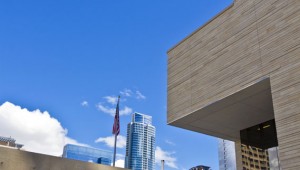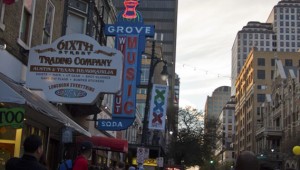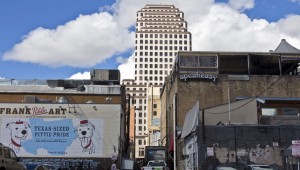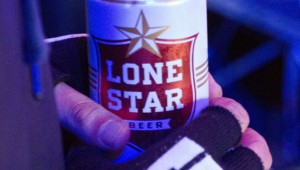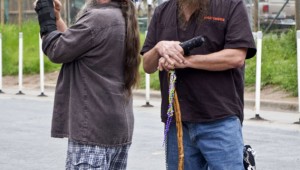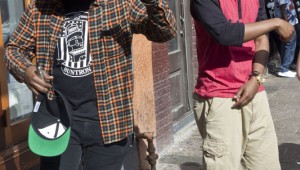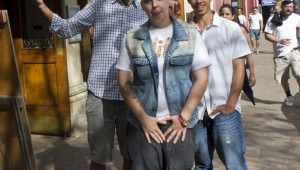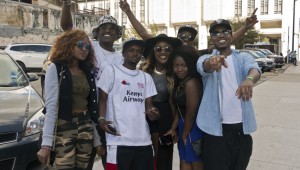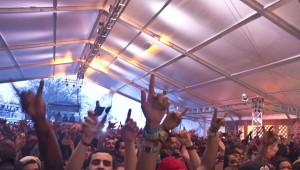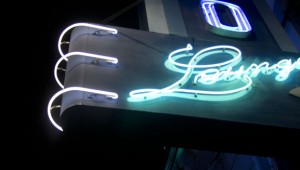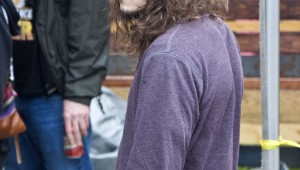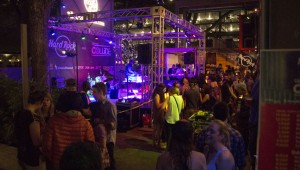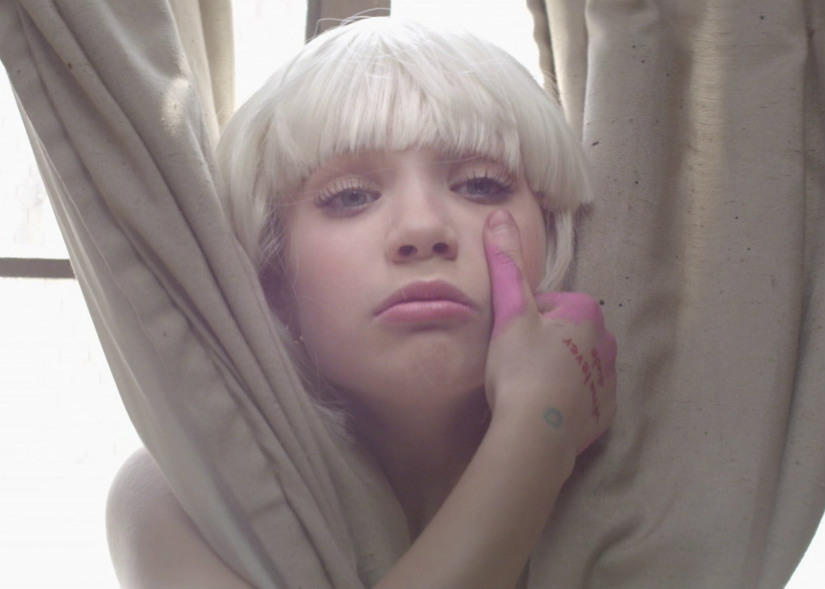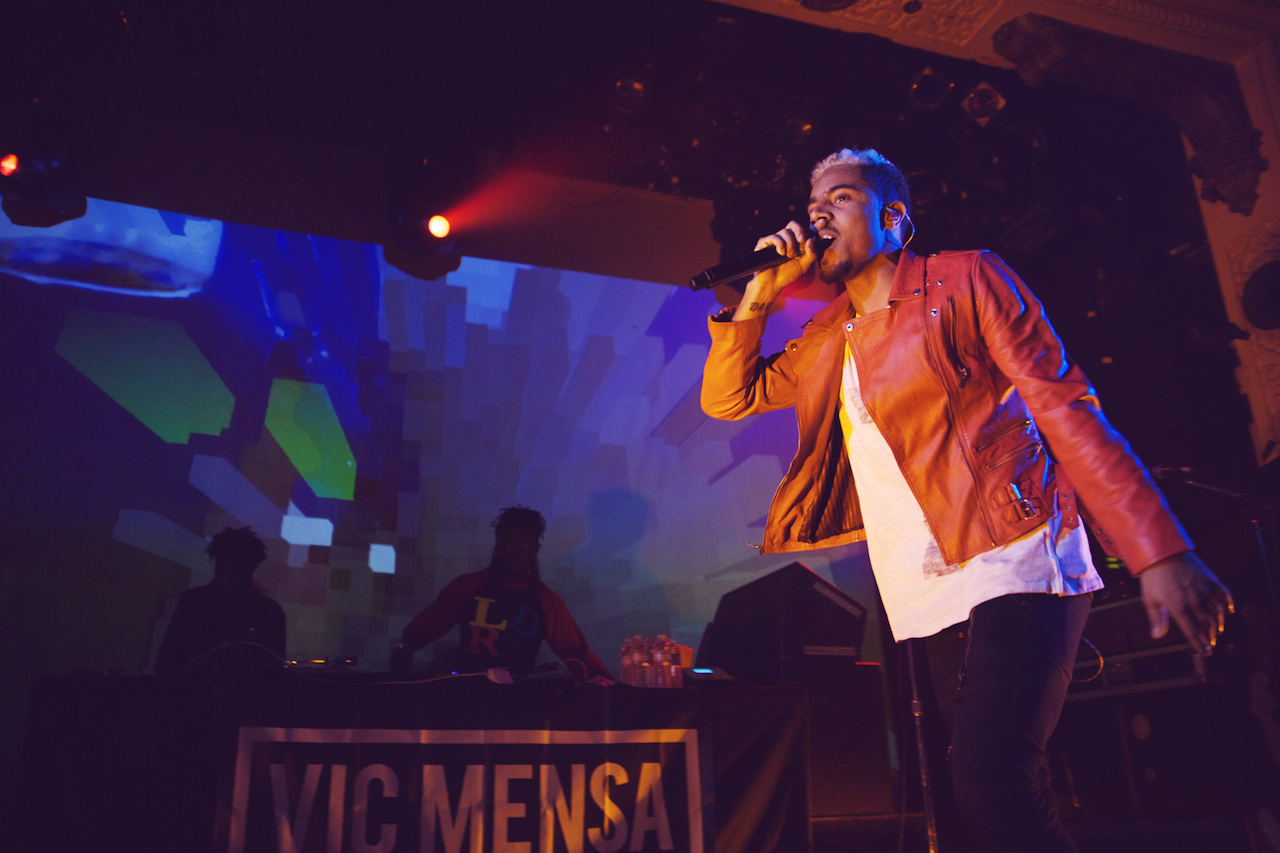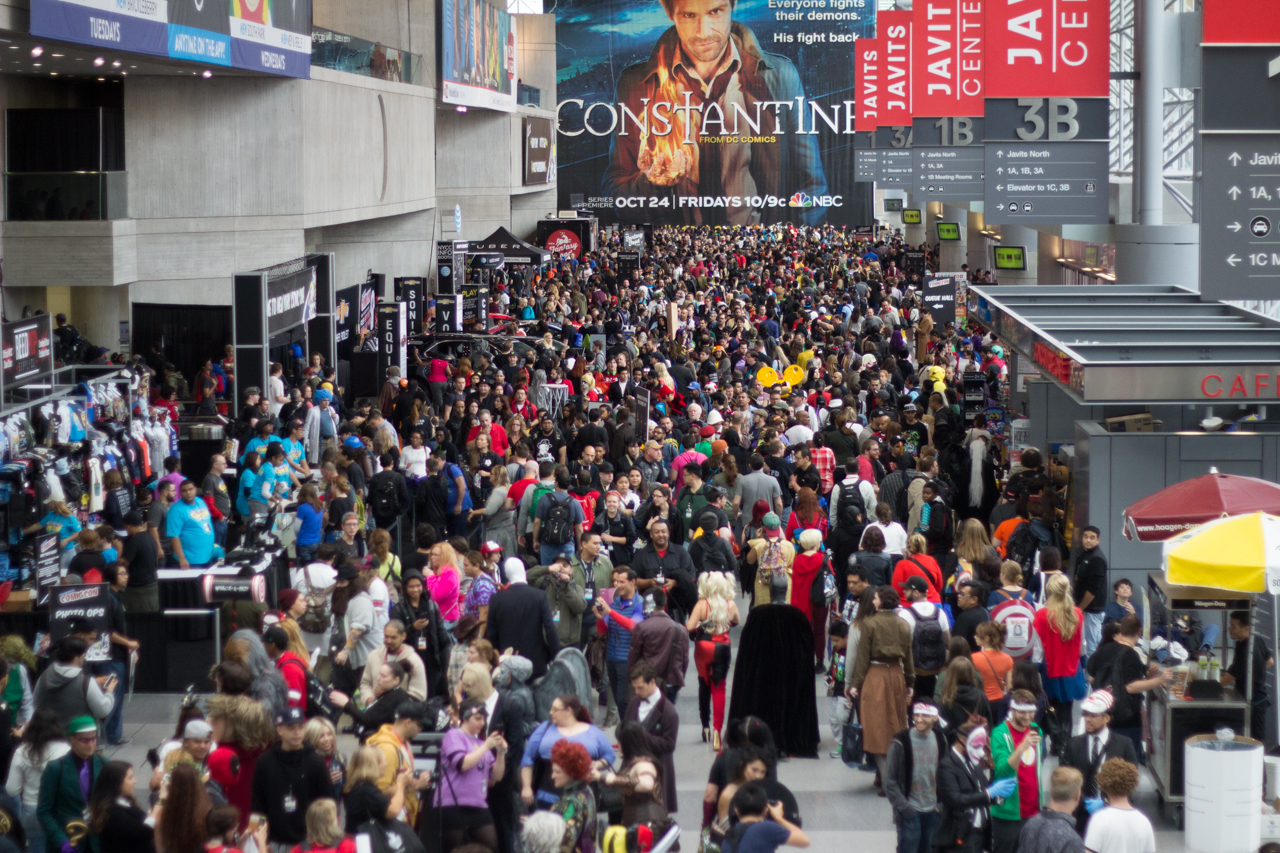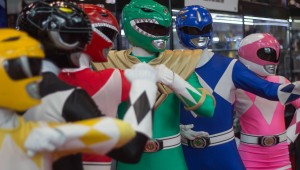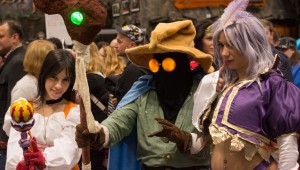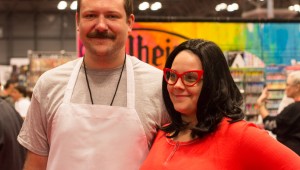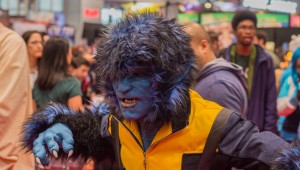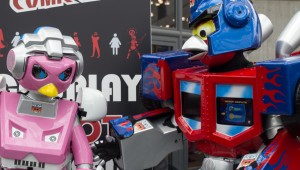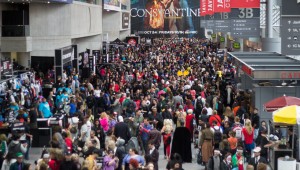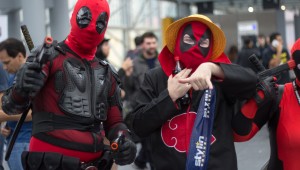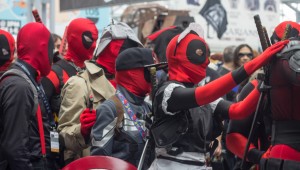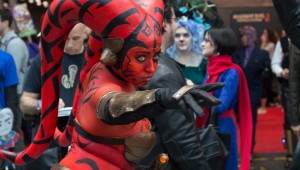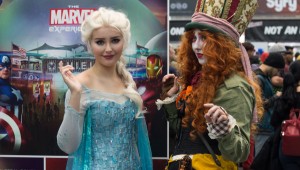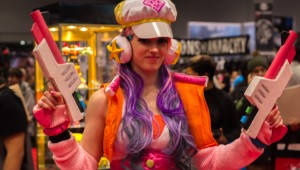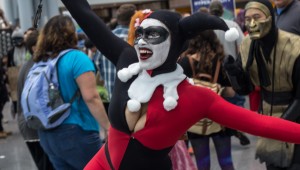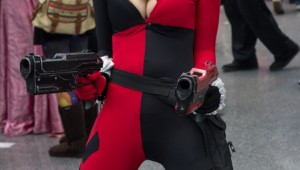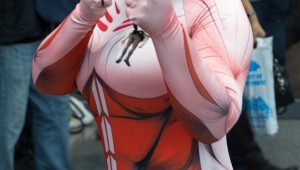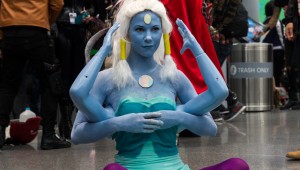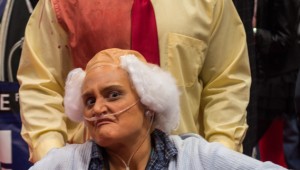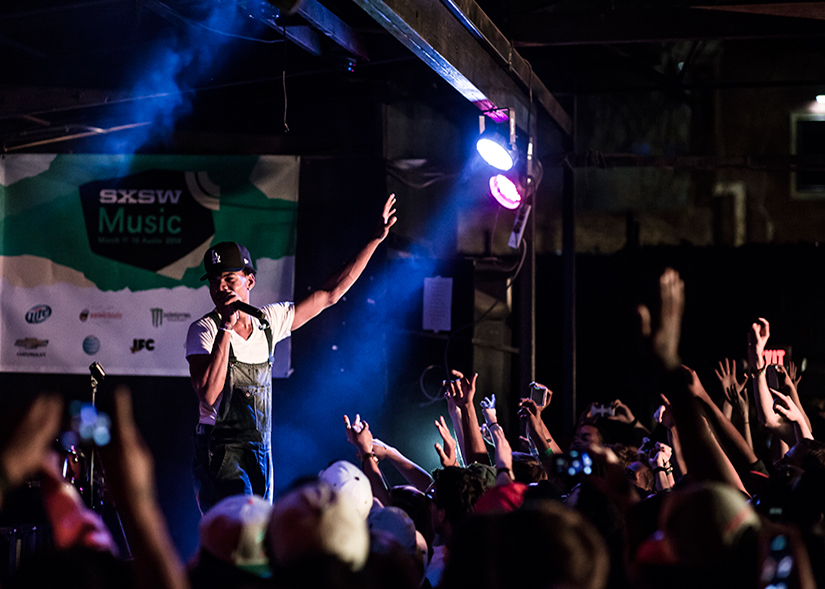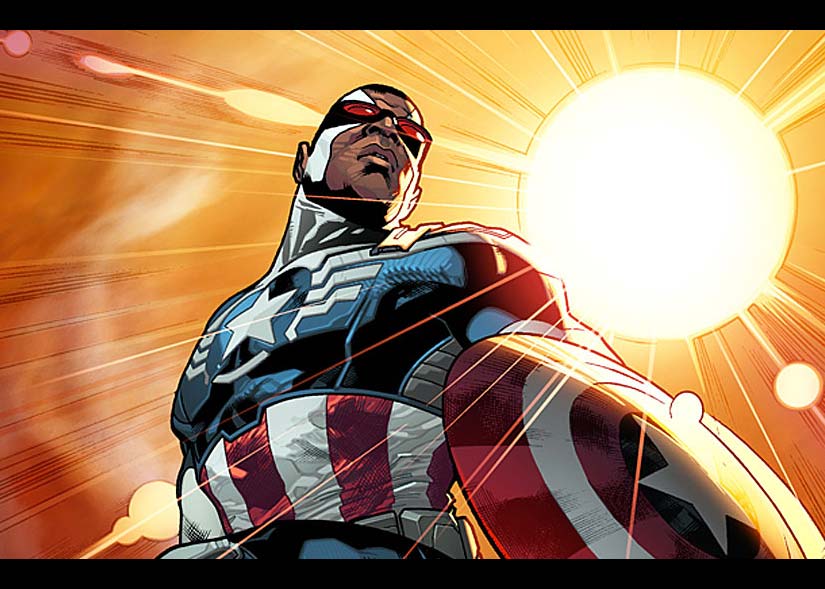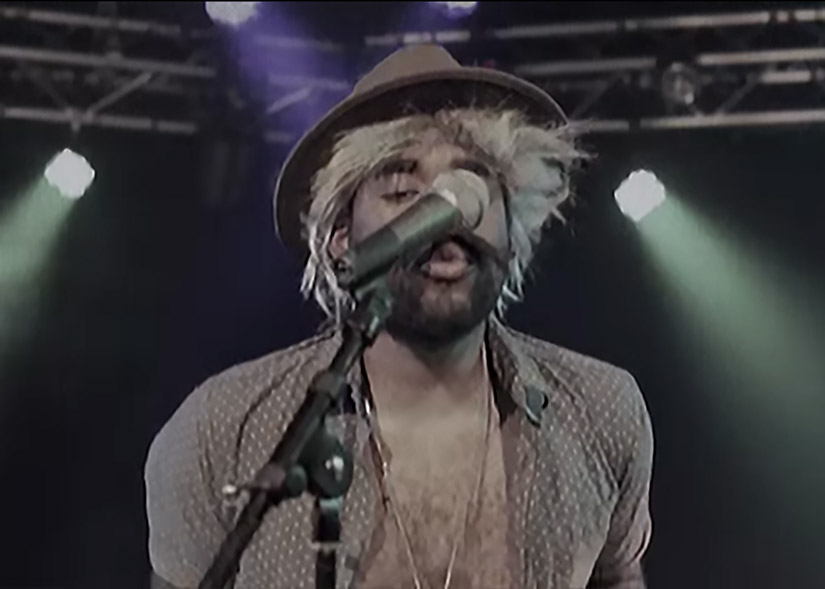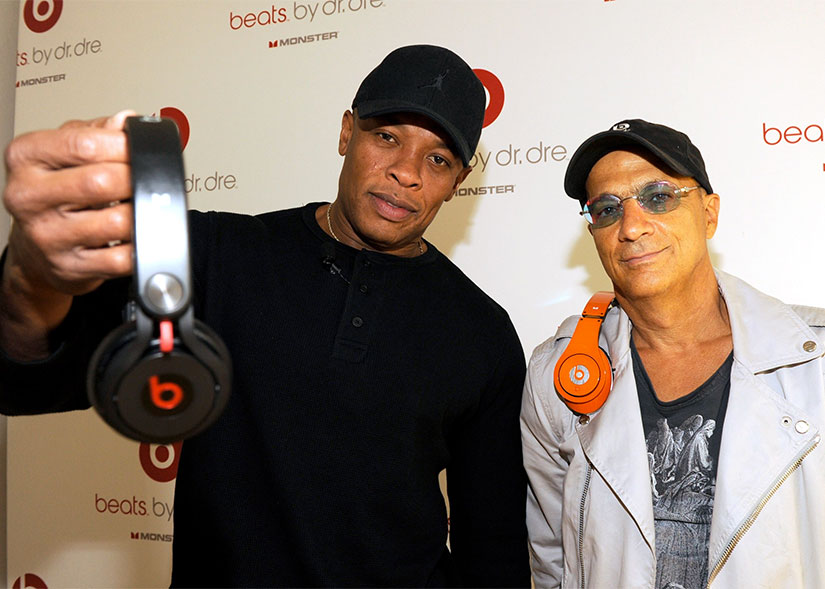[RH Photos] The Culture Clash at SXSW 2015
Photos by AngieStarPhoto
SXSW came and went yet again this year, and as Austin cleans it's streets and goes back to normal, many of us out-of-towners are back home still recollecting the culture combo we were part of. Whether you're from Chicago, Atlanta, California, Texas, New York City, the UK, or anywhere else in the world, SXSW has become a place where anyone can come to mix culture, share art, collaborate, and eat endless delicious food options. In the past week, I've received more CDs, mixtape downloads, Instagram followers, and openly met more strangers and brand ambassadors than I ever have.
SXSW truly is a festival of its own kind. There's much more than music, film showcases and conferences, as it's more of a combination of Texan culture, art, food, and most of all, a diversity in people. Outside of the local "Keep Austin Weird" types, you have endless writers, bloggers, photographers, videographers, musicians, and actors from all over just trying to stick out and be seen or heard, and all in an open, free spirited form. Most intriguingly, it's all random... one minute you could be listening to a rock band on Rainey Street and the next you're bumping into Wiz Khalifa downtown, then backstage with comedian Hannibal Buress and Chance the Rapper at the Fader Fort (true story). And right when you think you've seen or experienced the most random scenario, someone else will share an even more random story with you. It's on open environment that connects all types of people and this is what loved to capture on the festival. I'm not saying it wasn't fun shooting the performances at various venues, but it was the wandering, behind-the-scenes, spontaneous perspective I loved the most - the plethora of food trucks were a definite plus.
Here are some photos I gathered that I feel capture the essence of the people and scenery while walking around at SXSW. From locals, to people of all ages from different parts of the world, to the food scene, culture, ambiance, and most of all, the great American gem that is Austin, Texas. Find more photos here.
Nick's Top 10 Pop Songs of 2014
As a twenty-five year old, 6'3" 300 pound Latino man, I know a lot about pop music. Forgoing what some would classify as "good" musical tastes, I grew attached to songs playing on the radio at a young age and the obsession grew with time. Now thanks to the internet, I'm more in tune with pop songs than ever. And thanks to that very same internet, popular music covers a wider ranger than ever with varying tones, subject matters, and butts.
Oh yeah, 2014 was the year of Da Butt. But let's talk about that some other day. Here are my picks for the Top 10 Pop Songs of last year.
[RH Video] Vic Mensa at the Metro (11/28/2014)
[youtube id="hz3rqM9ZOQg"]
This post was originally published by our affiliate, Chicago Music. Photo and video by J. Frank.
Last Friday, SAVEMONEY's Vic Mensa headlined a show at the iconic Metro alongside some of his SAVEMONEY brothers, including Towkio, Leather Curduroys (made up of Kami de Chukwu and Joey Purp, and a special appearance by Chance the Rapper. Mensa has seen tremendous growth in 2014 following last year's release of his solo debut mixtape, INNANETAPE, such as a European tour with Danny Brown, being named to XXL's 2014 Freshman class, and charting in international markets with his first official single, "Down On My Luck." Friday's Metro show was just another highlight in a year full of them for the Chicago native.
Supremely talented videographer J. Frank was on hand to capture some of the intense energy on display at Vic's show, which you can watch in the video below.
[NYCC 2014 Photos] New York Comic Con 2014 Cosplay
Photos by Crystal Shepherd
I've been going to comic book conventions of varying sizes in Chicago for almost a decade now. Attending New York Comic Con, however, was its own beast. Thrown by ReedPOP, the same organizers that put together both San Diego Comic Con and C2E2, NYCC was always seen as the second-largest comic book convention in the US behind SDCC. This year, the Javits Center in Midtown Manhattan had upwards of 100,000+ attendees walk through its halls each day, nearing (if not surpassing) SDCC's numbers.
When I attend comic book conventions, I'm mainly there for two things: Buying stuff and checking out cosplayers. I took care of my purchases on the convention's first day (welcoming the Tobias Funke and Super Saiyan Goku Funko POP vinyls to my collection) and spent the rest of my time at NYCC 2014 looking for some amazing cosplayers. NYCC 2014 didn't let me down, as my friends and I ran across a full set of Mighty Morphin' Power Rangers, the partial cast of Final Fantasy IX, Bob and Linda from Bob's Burgers, the Scooby Doo team, and even a Titan from Attack on Titan.
[Video] Chance the Rapper's Full Lollapalooza 2014 Set
Photo by Andrew Zeiter
Short post with this one, as you should just go straight for the video with this one. In case you missed Chance the Rapper's Lollapalooza 2014 set, it's now available to stream. Watch it, enjoy it, and bask in the light that has been Chance's amazing meteoric rise over the past year and a half.
[youtube id="avKRmU4ilfI"]
Captain America and Marvel's Diverse Future
Since 1940, Captain America has [mostly] been portrayed by Steve Rogers, a blonde-haired, blue-eyed All-American archetype meant to represent American ideals in the face of the then-threat of Nazi Germany. The title "Captain America" has outgrown the man as Captain America represents an icon, an idea, a belief of American justice and patriotism. Without getting too into the fictional story behind the Captain America comics or Steve Rogers, many story arcs have analyzed the definition of who and what Captain America is.
Many stories have seen other characters take the mantle of Captain America outside of Rogers. For instance, Isaiah Bradley was the first black character to share the Captain America name in the 2003 limited series, Truth: Red, White, & Black, which took the initial super soldier serum story that gave Rogers his powers, but also drew parallels to the Tuskegee syphilis experiments that took place from 1932 to 1972. However, whereas Truth: Red, White, & Black depicted an alternative Captain America never meant to replace Rogers, Marvel's new direction for the character will not only re-envision the future of the Captain America brand, but also represents Marvel's willingness to update and modernize their stories and characters to befit current American culture.
Last week, the company announced that Sam Wilson AKA The Falcon (portrayed by Anthony Mackie in Captain America: The Winter Soldier) will become Captain America this fall in the pages of All-New Captain America #1. With Wilson in the fray, Marvel will not only be able to move away from the "displaced man from history" trope that Rogers always represented, but can depict a Captain America that holds different values and views that differ greatly from Rogers', but still correlate to what the stars and stripes represent. Captain America editor Tom Brevoort elaborates:
“[Sam] didn’t grow up in the 1930s, he’s a modern day man in touch with the problems of the 21st Century. For most of his professional life, Sam has worked as a social worker, so he’s seen the worst of urban society up close, and how crime, poverty, lack of social structure and opportunity can affect the community. So he’s got perhaps a greater focus on the plight of the common man, and perhaps a greater empathy for the underprivileged than maybe even Steve himself[...] Sam, like Steve, will be led by his personal morality and beliefs as to what is right and what is wrong—and where his beliefs may differ in their shading from those of the previous Cap are where the interesting stories will be found.”
The move makes sense from a creative and narrative standpoint for Marvel. However, it also represents something much larger than a simple comic book: Marvel's willingness to adapt and modernize decades-old establishments that have, for better or worse, become outdated. Three years ago, the company introduced a new Spider-Man to their Ultimate universe, Miles Morales, a young half-Black, half-Latino teenager who took over the Spider-Man name after Peter Parker's death. In the three years since his debut, Morales has become one of the company's most popular characters. However, while he may be the star of the Ultimate line of comic books, he didn't replace the standard Peter Parker found in the main Marvel comic books, instead representing a push towards a spotlight on minorities on a smaller scale within the Ultimate line. Still, the willingness to introduce a multiracial character into a large role was huge for both Marvel and the reception and acceptance of minorities in major pop culture circles.
Earlier this year, Marvel introduced the first Muslim character, Kamala Khan, to have their own comic book with Ms. Marvel, the fourth character to take the name of Ms. Marvel. Khan, a Pakistani-American teenager, has been viewed as a window through which non-Muslim readers can see. Also announced last week was Marvel's intentions to replace the current Thor character with a woman. With a black/hispanic Spider-Man, a Muslim Ms. Marvel, a female Thor, and a black Captain America, Marvel is flipping the white hegemony historically found in comics by elevating a wide range of racially-diverse characters into the spotlight under the names of the company's most iconic heroes.
Furthermore, it's the perfect time for a mainstream entertainment juggernaut like Marvel to feature a minority character in a substantial role. It's one thing to create a new character with a new background, mythology, etc.; it's another to include a character in the long-line of history and prestige that something as iconic as a brand or name carries with it. By appointing Sam Wilson as the next Captain America, Marvel is showing their investment and faith in the character, the comic's writers, and audiences' acceptance of the shifting status quo.
Naysayers may just see the move as a gimmick. And to be honest, those are very real concerns, especially considering the entire Captain America franchise outside of the comics. For example, Captain America: The Winter Soldier finished its box office run with above $700m in revenue. Considering the announcement of a new Captain America was just announced, it will be many years before the possibility of a black Captain America hits the screens. By that point, will Sam Wilson still be in the stars and stripes? Will Marvel even want to portray a character not named Steve Rogers as Captain America on the big screen? Earlier this year, when current The Amazing Spider-Man star Andrew Garfield expressed his support of Miles Morales appearing underneath the Spider-Man mask in theaters, Marvel balked at the idea of another character portraying one of their tentpole characters.
Marvel took a major step towards the diversification of their characters and brand. In doing so, they also acknowledged the changing landscape of American culture, setting forth a precedent where it won't be news that the next Iron Man will be Chinese or Spider-Man will be Filipino/Colombian. For now, all of us minorities can be happy that a company with such prestige as Marvel's is willing to buck the American white hegemony for one that better represents modern-day America.
New YouTube Subscription Service Might Block Independent Music
The next phase in YouTube's growth is near, and it could spell doom not only for the popular video platform, but for independent artists. YouTube is entertaining a subscription-based service, rumored to be called the "YouTube Music Pass," that will offer ad-free videos and downloadable songs to subscribers. However, the company will only feature videos from artists whose music labels have signed on to be a part of the service. Obviously, major label artists' videos will be salvaged, but smaller, independent labels are already balking at the notion of this new "pay to play" service that YouTube is implementing. Unfortunately, artists and labels who are non-compliant to the new service might find their videos blocked from YouTube.
According to YouTube, their service has attracted roughly "90% of the music industry." However, CEO Alison Wenham of Worldwide Independent Network, a group that acts in the name of all independent musicians, has made an official response to YouTube's plans:
Put simply, by refusing to engage with and listen to the concerns of the independent music sector YouTube is making a grave error of commercial judgment in misreading the market. We have tried and will continue to try to help YouTube understand just how important independent music is to any streaming service and why it should be valued accordingly.
Music fans want a service that offers the complete range of music available. This is something that companies such as Spotify and Deezer do, both of whom have excellent relationships with the independent music sector. By not giving their subscribers access to independent music YouTube is setting itself up for failure.
Major labels like Sony and Universal can afford to ink deals with YouTube that will allow their artists to continue to be represented within the new YouTube subscription service. Independent labels, however, are rumored to have been offered less lucrative deals when compared to their richer counterparts. YouTube claims that the new service will create a new revenue stream for musicians to continue to monetize their videos, but blocking smaller labels who don't sign onto the service runs counter to that very notion. While no official numbers or facts have been released, it's rumored that the contract YouTube has offered independent labels have been near-insulting that undervalue independent music.
So what does this mean for pre-existing indie musicians' videos? Everybody on the wide spectrum of "independent music," ranging from well-known musicians like Jack White, Radiohead, and Adele to rising stars like Ruby Hornet fan favorite ShowYouSuck, will be facing a crossroads of sorts. Videos that have been distributed and licensed by VEVO will still be present on the VEVO channel. However, videos exclusively licensed by independent labels will be taken down. The reason for videos being taken down beyond the indie labels' non-compliance is because YouTube doesn't want to continue offering the videos to free, ad-supported non-subscribers that they can't also offer to premium, paid subscribers.
Thus begs the question that affects artists who release music and videos directly: What happens to them? With amazing videos from independent directors like FD Films and Austin Vesely, their visibility and exposure will be severely limited if YouTube does, in fact, block all forms of independent music videos on their service. However, what's more likely is that they'll disallow monetization of music videos on their platform. Considering how rare it is for unsigned artists to even garner enough views to make money from their videos, this might not be that much of a hurdle for indie artists to cross. Then again, there are artists like Chance the Rapper who has found success without signing to a music label. Since his music and videos are unlicensed by any label, it would appear that his and other user-uploaded music videos would be exempt from YouTube's ban. Another, more feasible alternative for indie label-signed artists would be to flock over to Vimeo, which already offers better video quality than YouTube, but doesn't carry the same status or monetization opportunities that YouTube does outside of film audiences.
Could this be the rise of Vimeo in the wake of YouTube's demise?
[via The Guardian]
Nobody Will Forget About Dre: Apple Wants Beats by Dre for $3.2 Billion
Could Dr. Dre become the first billionaire in hip hop? Conflicting reports have come out that Apple has either bought Beats by Dre or are in talks to acquire the company for an astounding $3.2 billion. Obviously, Beats by Dre will come out the big winner if the acquisition goes through, but analysts are dumbfounded as to why Apple would splurge on the popular headphone manufacturers (who also have their own music streaming subscription service amongst other products and services beyond the headphones).
The acquisition would allow Apple to step their headphone game up, hopefully making the included iPhone earbuds a thing of the past with some better quality Beats by Apple wear. However, the biggest aspect of the acquisition is not Beats by Dre's big selling point (their headphones), but their steaming service Beats Music. The acquisition of the system and its algorithm could help bolster Apple's own music service in an attempt to compete with Pandora and Spotify. However, the Beats Music install base isn't known to have many subscribers.
If the deal goes through, it would become Apple's most expensive (and riskiest) acquisition to date. Meanwhile, Dr. Dre would become the richest rapper in the music industry. As a fan of both Beats by Dre and Apple, I'm all for the acquisition. If this means increasing the audio quality across all Apple products (iPod, iPad, iPhone, MacBooks, etc.), it can only be a blessing. Sure, stingy audiophiles will complain about Beats by Dre's focus on deeper bass for a muckier mid tone, but really, the common consumer won't even notice while they're juking to their iPads Powered by Beats by Dre Audio™.
[via CNET]



